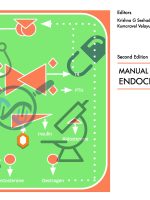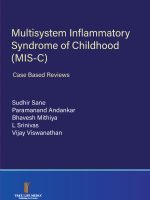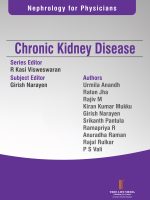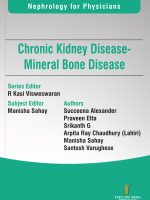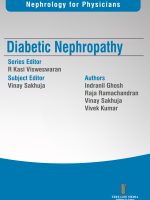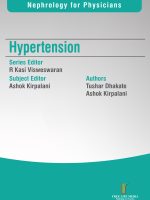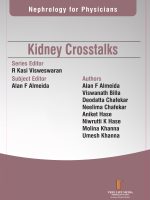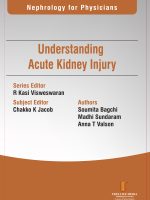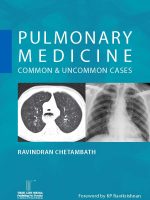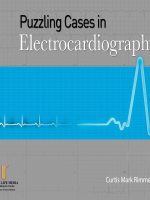Recommended Books
-
Manual of Clinical Endocrinology 2/Ed.
₹995.00Algorithms provide a logical, concise and cost-effective approach to medical reasoning: utilizing a concise, step-by-step approach based upon clues from the history, physical examination and laboratory studies, algorithms help avoid excessive unnecessary procedures and testing. The 2nd edition of Manual of Clinical Endocrinology deals with practical issues ranging from simple thyroid function testing and thyrotoxicosis to approaching a patient with suspected thyrotoxicosis. Algorithms are simple and effective tools for the practitioner in a hurry and since the majority of the intended audience, physicians, general practitioners and postgraduates have very little time amidst their busy clinical routine, this manual uses algorithms. Twenty-two clinical issues are covered by an algorithmic approach, breaking down long lists and tables of differential diagnosis into smaller, more manageable ones. Common clinical symptoms, signs and laboratory abnormalities are classified as they present themselves at the patient’s bedside. This manual is an attempt to provide the busy practitioner with a desktop reckoner which will be useful while approaching a patient with a suspected endocrine problem. The authors have strived to be practical not pedantic – at the same time have made great effort to ensure that the recommendations are evidence based.
-
PHYSIOLOGY SIMPLIFIED
₹525.00Complex physiological concepts simplified to easily understandable points. – Written with consideration to the examiner’s mind and the first-year students’ perspective – Comprehensive information in concise flowcharts and diagrams – One of the most preferred exam-preparatory manuals
-
Pulmonary Disorders in Women
₹1,695.00This is a book reflecting women’s perspectives in lung disorders. It is an evolving concept that all systems of the body have sex-specific biological features. It is often observed that the etiology, clinical course ans response to treatment of many diseases vary between men and men. These differences are due to the differences in genes, and due to the differential exposure of hormones and environmental factors starting from the prenatal period. This is why, male and female tissues behave differently in many respects. However, sex-specific approach is not considered in majority of the situations other than for women – specific diseases. Women have different gender-specific roles in the society and hence the epidemiological and demographic characteristics of many diseases vary between men and men. Gender differences between men and women in compliance to treatment and health seeking behaviors may be major contributors of gender specific epidemiological trends.
-
PULMONARY MEDICINE COMMON AND UNCOMMON CASES
₹1,295.00Common and Uncommon Cases in Pulmonary Medicine bring to the readers real time clinical case ranging from common diseases with typical presentations to uncommon and rare diseases with atypical features. Presented in a comprehensive, easy to read format, the book aims to be extremely useful to pinpoint a diagnosis. The chest X-ray is often central to the diagnosis and management of a patient. As a result, every doctor requires a thorough understanding of the common radiological problems. This pocket book describes the range of conditions likely to be encountered in the day-to-day clinical practice and guides the reader through the diagnostic process based on the appearance of the abnormality shown. Salient Features – Detailed discussion on X-ray and CT scans providing a clear understanding of a range of diseases encountered. – Includes valuable advice on how to examine an X-ray. – Assists the doctor in determining the nature of the abnormality. – Points the clinician towards a possible differential diagnosis. – Clinical pointers in each chapter to note the important features that may be missed. – There is extended use of CT imaging with advice on choosing modalities depending on the clinical circumstances.
-
Puzzling Cases in Electrocardiography
₹775.0012 Lead Electrocardiography remains as clinically relevant now as when first introduced to clinical medicine decades ago. The value of 12 Lead ECG is mattering the ability to integrate the ECG findings into information provided by the history and Physical Examination. The book authored by Prof Rimmerman, one of the foremost Cardiologists in the world follows 50 ECG Case Studies purposefully chosen where the ECG made a clinical impact on the management of the patient


